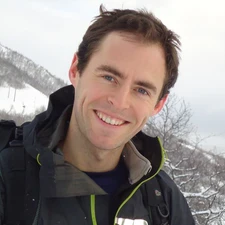Steven A. F. Smith

TS Tectonics and Structural Geology
The 2013 Division Outstanding Young Scientist Award is awarded to Steven A. F. Smith for fundamental studies on the structure and evolution of fault and shear zones in the Earth’s continental crust, and deformation mechanisms that occur in fault rock materials.
Steven A. F. Smith completed his PhD from the University of Durham, England, in 2009. His PhD work involved a study of the fault rock assemblages and weakening mechanisms along the Zuccale low angle normal fault on the island of Elba, Italy, leading to eight publications. In parallel, together with colleagues in Durham, he pioneered the use of digital mapping techniques in structural geology, and has applied GPS- and laser-based technologies to understand fold curvature and fault surface roughness.
His excellence was recognised early on. At only 28 years old he has already received several awards including a Durham University Postgraduate Fellowship, the President’s Award of The Geological Society of London, an AGU Outstanding Student Paper, and the Ramsay Medal of the UK Tectonic Studies Group. Since 2006, Smith has co-authored over twenty peer-reviewed publications and acted as a reviewer for a wide range of Earth science journals. He has been guest editor in a special volume of the Journal of Structural Geology on fault zone structure, and has presented over twenty conference contributions. He has acted in a consultant role for two major oil companies, given several invited presentations internationally, convened number of international symposia and served as reviewer for international journals.
Smith’s research interests concern the structure and evolution of fault and shear zones in the Earth’s continental crust, and deformation mechanisms that occur in fault rock materials. His main tools are detailed fieldwork, microstructural analysis, and rock deformation experiments. He has already made and published important discoveries and his yet-unpublished work (that he has presented at recent conferences) on experimental seismogenic faulting is outstanding and promises equally impactful publications.
